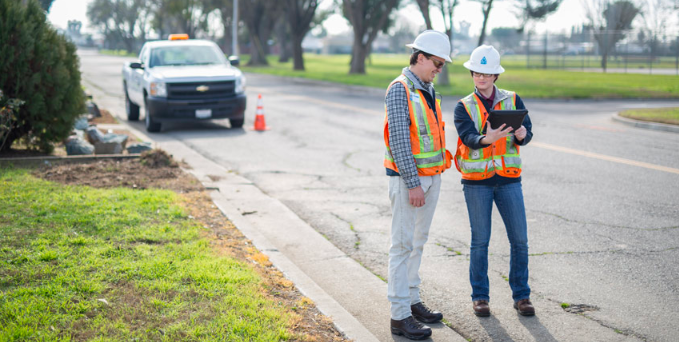
In the dynamic landscape of construction projects, the significance of a Construction Traffic Impact Assessments (CTIA) cannot be overstated. This blog will delve into the importance of CTIAs, with a specific focus on the City of Melbourne’s (CoM) requirements and guidelines. Understanding the CTIA process is crucial for project managers, developers, and traffic engineers to ensure a seamless integration of construction activities with the existing traffic infrastructure.
What is a Construction Traffic Impact Assessment (CTIA)?
Construction Traffic Impact Assessments are integral parts of Construction Management Plans (CMP) that meticulously investigates and analyses the potential impacts of demolition, excavation, and construction work on a project. While a Construction Traffic Management Plan (CTMP) primarily focuses on the strategies for managing each project stage, a CTIA delves deeper into assessing the existing traffic conditions and formulating plans to ensure safety and amenity in the affected public space.
What does the City of Melbourne (CoM) require in Construction Traffic Impact Assessments?
The CoM mandates that every CMP must include a detailed CTIA to obtain approval for the project. Failure to meet these requirements can affect eligibility for other permits. Specific aspects covered by CTIAs include parking changes, work activities requiring permits such as the installation of temporary protective structures, and any alterations to road configurations or infrastructure located on the road.
Why is it beneficial to hire a qualified traffic engineer for construction projects?
Given the complexity of CTIAs and the strict standards set by the City of Melbourne, hiring an experienced traffic engineer is highly advisable. These experts have extensive knowledge to handle the intricacies of traffic impact assessments, making sure everything aligns with regulations and that project approvals run smoothly.
Their familiarity with the city’s requirements and established connections with councils simplifies CTIA preparation, giving a strategic edge in meeting the project’s specific needs. Having a qualified traffic consultant leads to more effective CTIA, ultimately contributing to successful project outcomes.
Melbourne’s Unique Challenges and Considerations when preparing Construction Traffic Impact Assessments
Urban Dynamics & Construction Traffic Impact Assessments
Considering Melbourne’s unique urban dynamics is crucial in a CTIA. High-density areas, diverse traffic patterns, and mixed land uses can significantly impact construction traffic. This section delve into the specific challenges posed by Melbourne’s cityscape, such as navigating through narrow streets or accommodating public transportation routes.
Environmental Considerations
Expanding on the mitigation strategies, it’s essential to consider the environmental impact of construction traffic. Melbourne places a high value on sustainability, and construction projects need to align with these principles. This involve detailing plans for dust and noise control, waste management, and eco-friendly transportation alternatives.
Community Engagement
In the communication section, emphasizing community engagement is vital. Melbourne residents are actively involved in urban planning discussions. Including strategies for community involvement, public forums, and feedback mechanisms will contribute to a more inclusive and cooperative construction process.
Technology Integration
Integrating technology for real-time monitoring and adaptive traffic management can be highlighted during this section. Melbourne is known for embracing smart city initiatives, and incorporating technology can enhance the responsiveness and efficiency of traffic management strategies.
Regulatory Compliance
In the emergency preparedness section, compliance with local regulations and standards should be emphasized. Melbourne, like many cities, has specific regulations regarding road closures, noise levels, and emergency response protocols. Adhering to these regulations ensures a smooth collaboration with local authorities.
Public Transport Synergy
Expanding on the road use analysis, addressing the synergy with Melbourne’s extensive public transport network is essential. Coordinating construction activities with public transport schedules and routes helps minimize disruptions and contributes to the overall efficiency of the city’s transportation system.
Case Studies and Best Practices
Drawing on past projects in Melbourne or similar urban environments can provide valuable insights. Including case studies of successful construction traffic management plans and their outcomes can serve as practical examples for project managers. This may also involve highlighting innovative solutions and best practices adopted in other metropolitan areas.
Future Trends and Adaptability
Considering the ever-evolving nature of urban environments, a forward-looking approach is crucial. Discussing how construction traffic management plans can adapt to future trends, such as increased adoption of electric vehicles, changes in commuting patterns, or emerging technologies, adds a strategic dimension to the CTIA.
In conclusion, a well-prepared Construction Traffic Impact Assessment (CTIA) is a critical component for any construction project. Adhering to the relevant authority guidelines ensures a smooth approval process and fosters a collaborative approach between developers, traffic engineers, and local stakeholders. By understanding and implementing a comprehensive CTIA, construction projects can contribute to the growth of a particular area while minimizing disruptions to the existing traffic infrastructure.
Reach out to the traffic engineers of RedSquare Traffic to discuss about Construction Traffic Impact Assessments.











